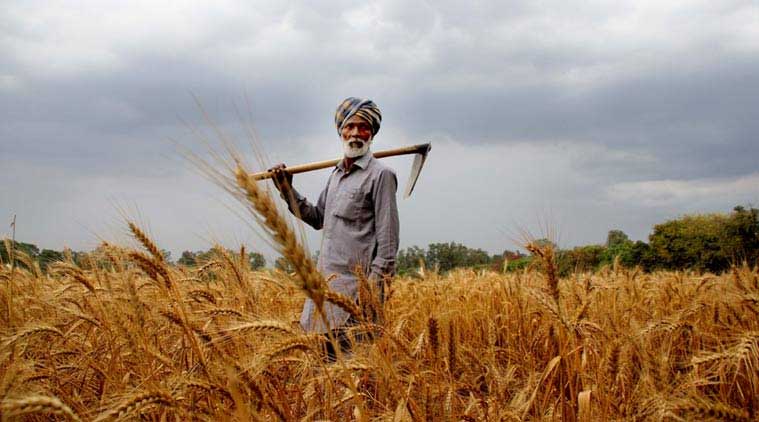Indian agriculture and its allied sectors still remain the highest contributor to the country’s GDP at 18%. It is also the highest employer, employing more than 50% of the total workforce of the country.
Impact of COVID-19 on Agriculture Sector
When the countrywide lockdown was imposed in India due to the COVID-19 pandemic, the agriculture sector was one of the worst hit sectors. Field laborers facing a livelihood crisis started rushing to their hometowns in large numbers. April and June’s crops were badly hit in the absence of manpower. Exports plummeted and a reign of crisis engulfed the sector including the farm equipment manufacturing industry.
Impact of COVID-19 on Farm Equipment Manufacturers
Factories manufacturing agriculture equipment were also hit and even the big players were functioning only on 20-30% of their full capacity.
Mahindra & Mahindra, the largest domestic manufacturer of agricultural equipment registered an 80.4% dip in net profit due to the pandemic. The sale of tractors, one of the largest selling equipment of M&M, went down by 24%.
Further, the concept of ‘Globalization to Localization’ is going to present a challenge for the farm equipment industry. Experts predict that a rise in the graph can’t be expected till the third quarter of 2021; however, things will begin changing for good in 2022-23 due to globalization.
COVID-19 Impact on Agriculture Allied Sectors
The allied sectors of agriculture – horticulture, animal husbandry, and fisheries are also hit in COVID 19 due to a dip in demand and resources. The unavailability of laborers and transportation were the main factors behind their losses.
Livestock has been a major source of supplementary income for around 70% of agricultural households in India. Also, livestock products account for around 33% of the total food expenditure in India. Lockdown has adversely affected the families depending on their livestock produces for a stable income. Due to the lockdown, they couldn’t sell their produces, mainly milk to the dairies; which in turn faced a dip in demand.
According to an estimate by the Ministry of animal husbandry dairying and fisheries, the industry was losing around Rs 1500 crore every day when the lockdown was first imposed.
The Revival – Moving ahead of the Pandemic
During the pandemic, the government of India announced many farmer-centric schemes including crop insurance, loan, etc are intended to revive the farmers from COVID 19 impact and losses.
In an attempt to boost back the agriculture and allied sectors from the adverse impacts of COVID 19, the government in May 20 had announced a package of Rs 1.63 Lakh crore.
The package is linked to the core agriculture sector as well as other allied sectors like – poultry, fisheries, bee farming, animal husbandry, herbal plantation, food enterprises, etc. The impact of the package will be visible only in long run and it doesn’t seek to provide immediate relief in wake of the pandemic.
There is also some good news coming in from the farm equipment manufacturers as they have started seeing some demand after relaxations in the lockdown. For the tractor industry, it was an up-down-up sale from March to May. Total sale of tractors (including exports) in the months of March, April, and May stood at 35216 units, 12256 units, and 64860 units respectively. Around 55% jump in sales than in March is a testimony that the industry is back on its foot and thriving.
Government’s Vision and Agriculture Reforms Post Coronavirus
On the 2nd of May, the Prime Minister of India held a high-level meeting attended by the Agriculture Minister, Finance Minister, and the Home Minister. The meeting was specifically held to review the impacts of COVID 19 on the agriculture sector and taking steps for its revival.
The Prime Minister also expressed his willingness to change old-fashioned rules and regulations governing the industry and increase the farm gate price for the farmers. Farmgate price is the price at which the farmers can sell their commodities directly from the farm without transporting them to the designated mandis.
The Prime Minister also stressed on the unification of the domestic agriculture market, which will allow traders and farmers to sell theirs produces countrywide. The current ‘mandi’ system restricts the farmers to sell their goods to only specific mandis in a particular area, thereby putting time-bound and revenue-bound barriers. Moreover, the farmers have to sell through registered middlemen, further marginalizing their profits.
The Prime Minister also instructed to scale up the use of the e-NAM (Electronic National Agricultural Market) platform countrywide.
The platform allows farmers and traders to trade their commodities in any of the listed mandis for a profit through e-NAM mobile application. Presently, the platform has 1000 mandis across 18 states and 3 Union Territories of India.
The government also seeks to exchange interstate mandi tax with a single mandi tax for the whole country same as the Goods and Services Tax (GST).
Changes in the tenancy laws, without impacting land ownership are also expected in the future. In the present scenario, a tenant farmer isn’t able to avail loan and other benefits as he didn’t own the land.
With a government that favors digitalization and unification of the Indian agriculture market, the sector is destined to undergo some favorable changes in the next 5 to 10 years. The focus would be on making the agriculture and allied sectors less vulnerable to losses by removing middlemen and strengthening farmers.

